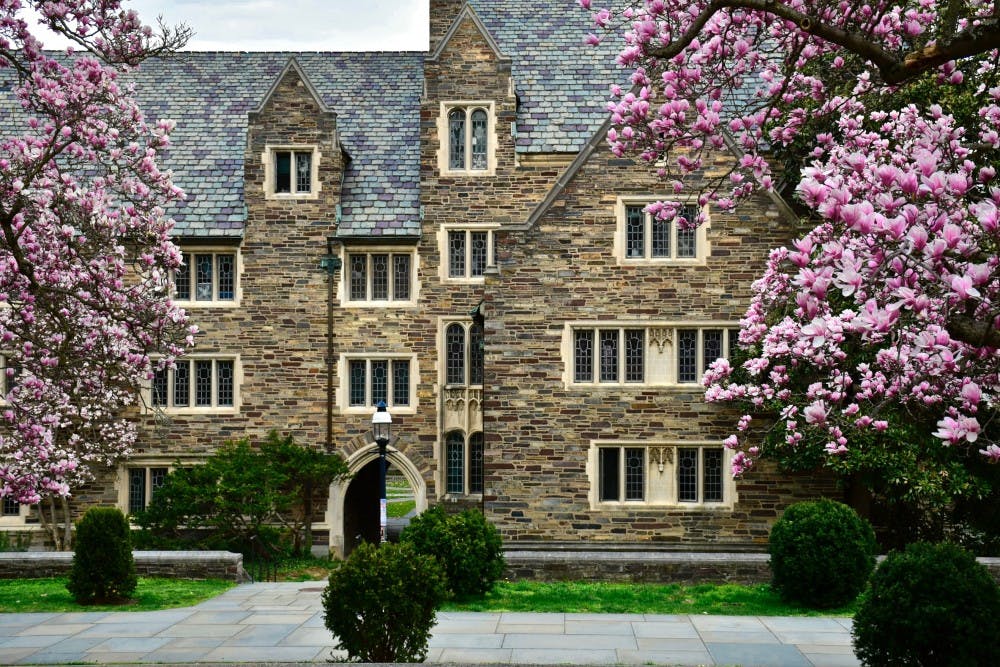While much of Princeton’s charm comes from its beautiful historical architecture, at the heart of the University are interactions between the students on its campus and the incredible buildings that offer them housing and educational spaces. It is important to ensure that as these buildings age, they are renovated to provide adequate housing for the students who live in them.
The regular maintenance of interiors and the presence of bathrooms and water fountains near every set of rooms are essential to making living conditions pleasant for students. Moreover, given New Jersey’s weather conditions, students should not have to leave their buildings in the dead of winter to do their laundry or access the closest kitchen. The University should ensure that every building is fully equipped as a self-contained space in which students can feel at home.
The University currently fails to achieve this standard across many of its residential spaces, including Wilson College, parts of Rockefeller College, and much of the upperclass-student housing.
For example, a few days ago, a post on Facebook’s Tiger Confessions complained about the terrible living conditions in the Rockefeller-Campbell dorms. The user called the hall a “dump,” bringing attention to the unmaintained furniture, lack of basic amenities (e.g. kitchen, laundry room, adequate study spaces), and poor location of bathrooms in the basements of the building. They contrasted this with halls on campus that not only have high quality versions of all the aforementioned amenities, but are also paired with further entertainment spaces such as pool and foosball tables.
Complaints about the room-draw system at Princeton are not uncommon. However, the lottery is ultimately supposed to be random — whether that is true or not remains a debate for another day. This serves the important purpose of granting low-income students the same access to quality housing as high-income students. Any form of differentiated market pricing of dorms would inevitably result in wealthier students renting out higher-quality, more expensive rooms than lower-income students.
However, given the large disparity between the quality of housing on campus, with comparatively luxurious halls such as Bloomberg and Wendell on one hand, and neglected ones such as Campbell and 1937 on the other, we still lack egalitarianism in the quality of life of students across campus. Some students have a significantly tougher living situation than others.
Thus, while it is essential to avoid a price-based room allocation system, it is also important to ensure that students are receiving fair living conditions, so that all students have an adequate quality of life and access to basic amenities; a refurbishment of existing housing, particularly in north campus and Wilson, should be a pressing concern for University administrators.
It is problematic that many students feel like their dorms are so uncomfortable that they are forced to spend most of their day away from their room, which is supposed to serve as a private space for students to unwind. The fact that a large chunk of upperclass-student housing is called the “slums” is indicative of the dissatisfaction and discomfort that exists among students regarding their housing.

The argument that the old architecture cannot support drastic reconstruction or the installation of air-conditioning is an empty claim. Many aged academic buildings have undergone rigorous maintenance — the McCosh 50 lecture hall underwent a $400,000 renovation in 2013 and is once again experiencing a renovation that began this summer. Moreover, while the seminar rooms and Writer’s Studio in Blair Hall are fully air-conditioned, the adjacent residential spaces in Blair lack air conditioning.
Hence, there exists a large capacity to renovate many dormitories on campus. While the immediate defense for the institution here would be limitations of funding, it appears that the issue is not a lack of money, but rather the University’s misplaced priorities, given that a new residential college, Perelman College, is being constructed, in part to account for the increasingly large number of applicants every year. This space will allow Princeton to admit 125 additional students every year.
The University, however, has yet to guarantee its existing students an adequate quality of life during their time here. Dedicating funding towards the housing of 125 new students per class neglects the housing needs of the 1,300 current students in each class year, as many students will continue to live in unequipped halls, while other students will get to inhabit even newer spaces in Perelman. This indicates a greater investment in revenue generation through increasing class capacity than in the quality of student life on the part of the University.
All in all, more funds need to be directed towards the existing student body to ensure that the University maintains the quality of student life at an adequate level. Princeton needs to uphold its commitment to providing a home to its students during their time here.

Khadijah Anwar is a sophomore from Dubai, UAE. She can be reached at kanwar@princeton.edu.








